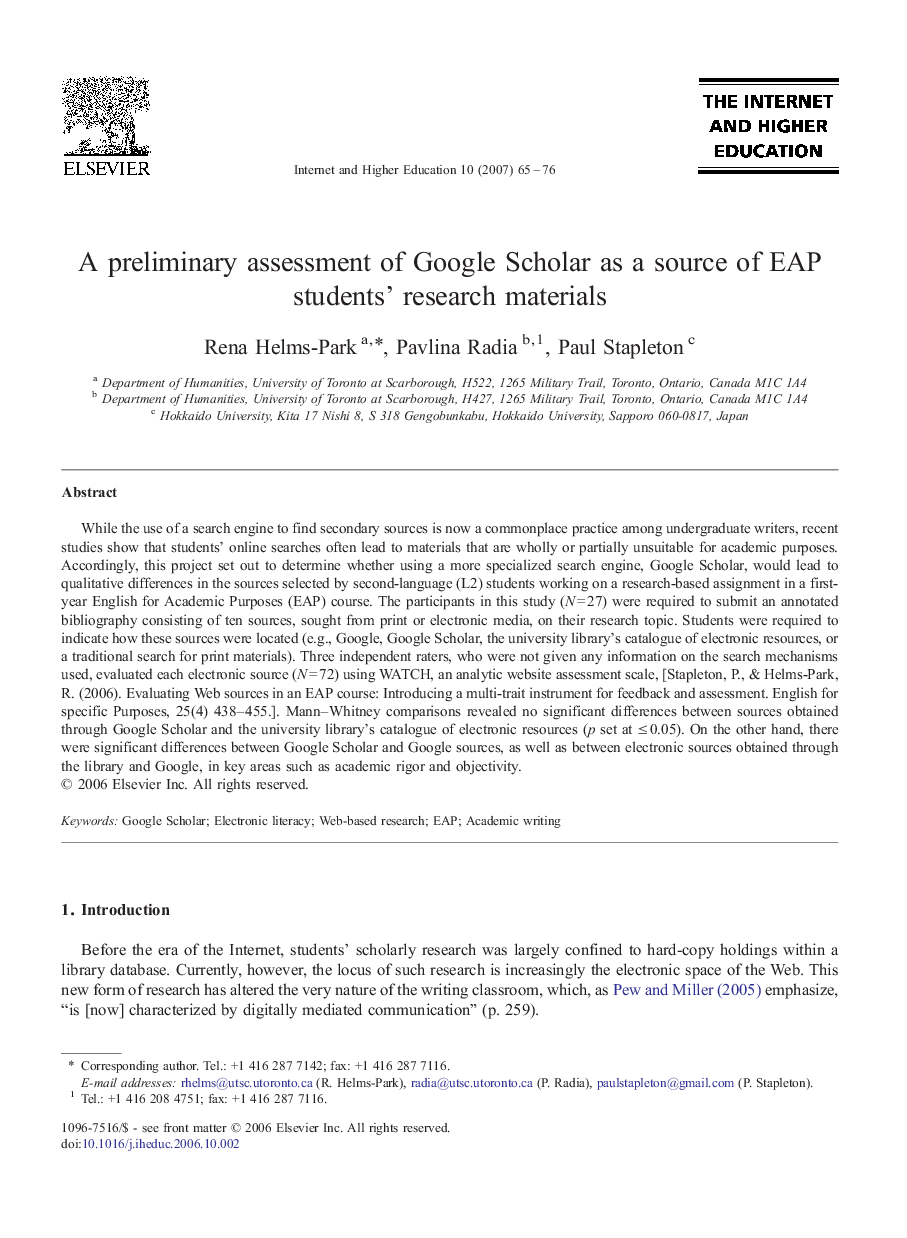| Article ID | Journal | Published Year | Pages | File Type |
|---|---|---|---|---|
| 358039 | The Internet and Higher Education | 2007 | 12 Pages |
While the use of a search engine to find secondary sources is now a commonplace practice among undergraduate writers, recent studies show that students' online searches often lead to materials that are wholly or partially unsuitable for academic purposes. Accordingly, this project set out to determine whether using a more specialized search engine, Google Scholar, would lead to qualitative differences in the sources selected by second-language (L2) students working on a research-based assignment in a first-year English for Academic Purposes (EAP) course. The participants in this study (N = 27) were required to submit an annotated bibliography consisting of ten sources, sought from print or electronic media, on their research topic. Students were required to indicate how these sources were located (e.g., Google, Google Scholar, the university library's catalogue of electronic resources, or a traditional search for print materials). Three independent raters, who were not given any information on the search mechanisms used, evaluated each electronic source (N = 72) using WATCH, an analytic website assessment scale, [Stapleton, P., & Helms-Park, R. (2006). Evaluating Web sources in an EAP course: Introducing a multi-trait instrument for feedback and assessment. English for specific Purposes, 25(4) 438–455.]. Mann–Whitney comparisons revealed no significant differences between sources obtained through Google Scholar and the university library's catalogue of electronic resources (p set at ≤ 0.05). On the other hand, there were significant differences between Google Scholar and Google sources, as well as between electronic sources obtained through the library and Google, in key areas such as academic rigor and objectivity.
